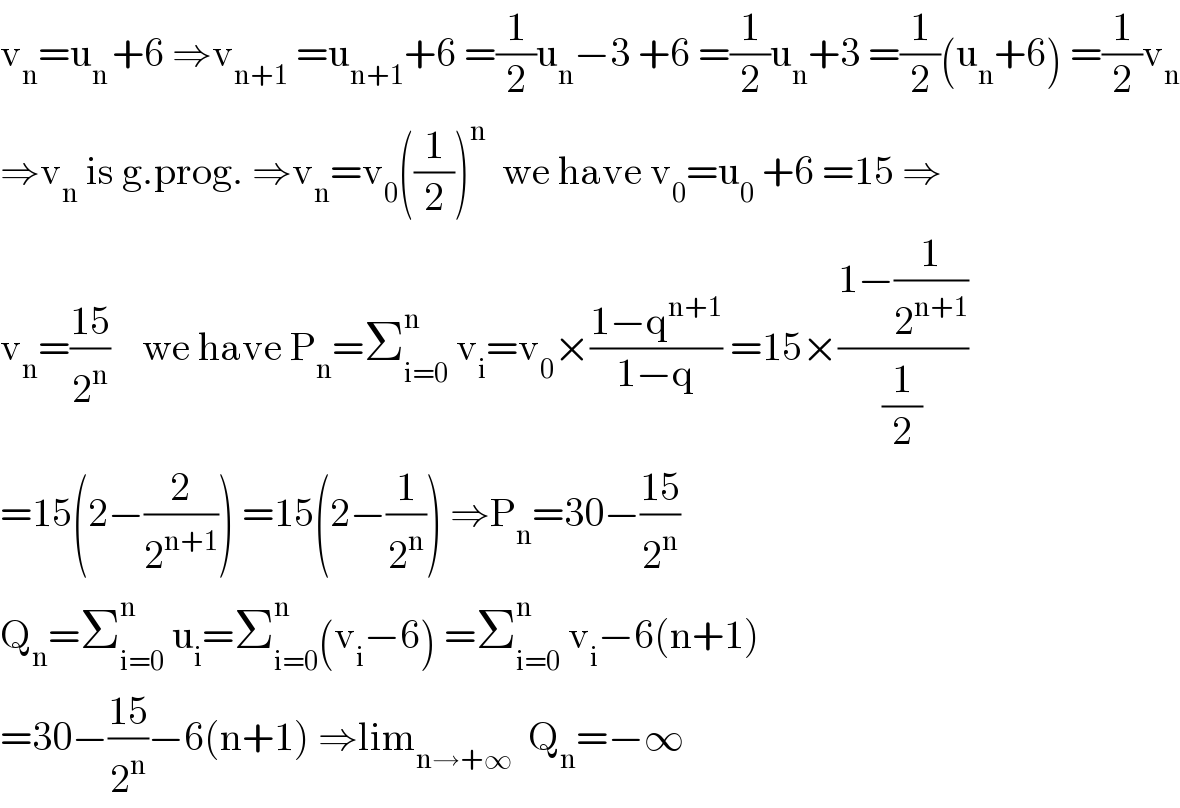Question Number 98380 by Rio Michael last updated on 13/Jun/20
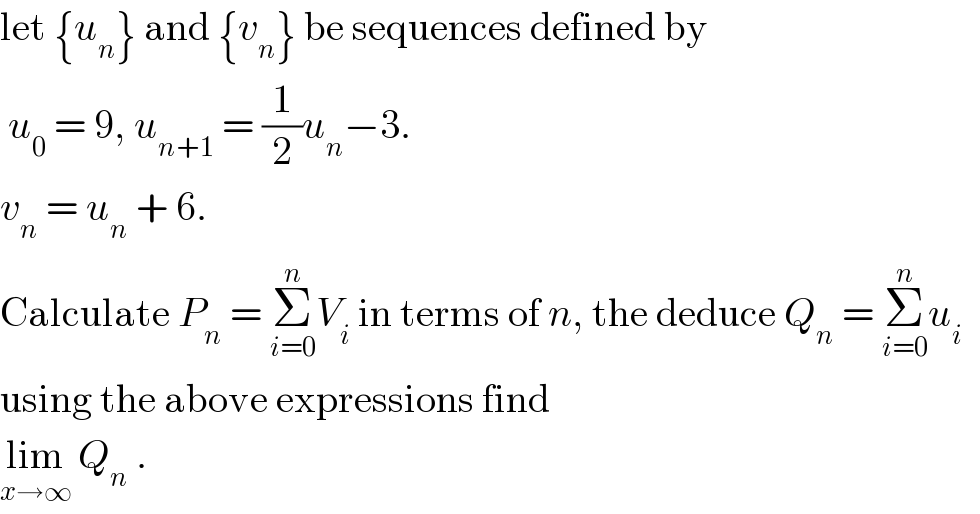
Answered by Aziztisffola last updated on 13/Jun/20
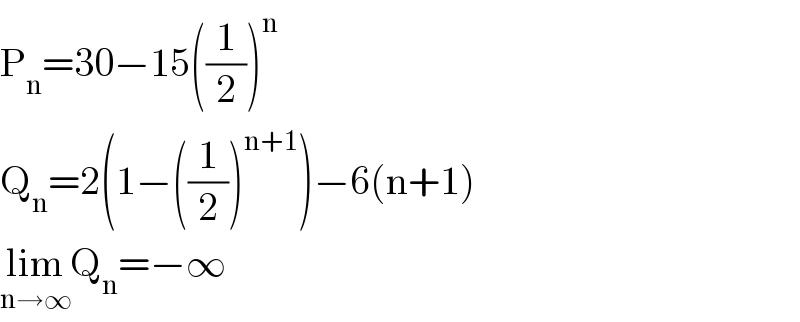
Answered by mr W last updated on 13/Jun/20
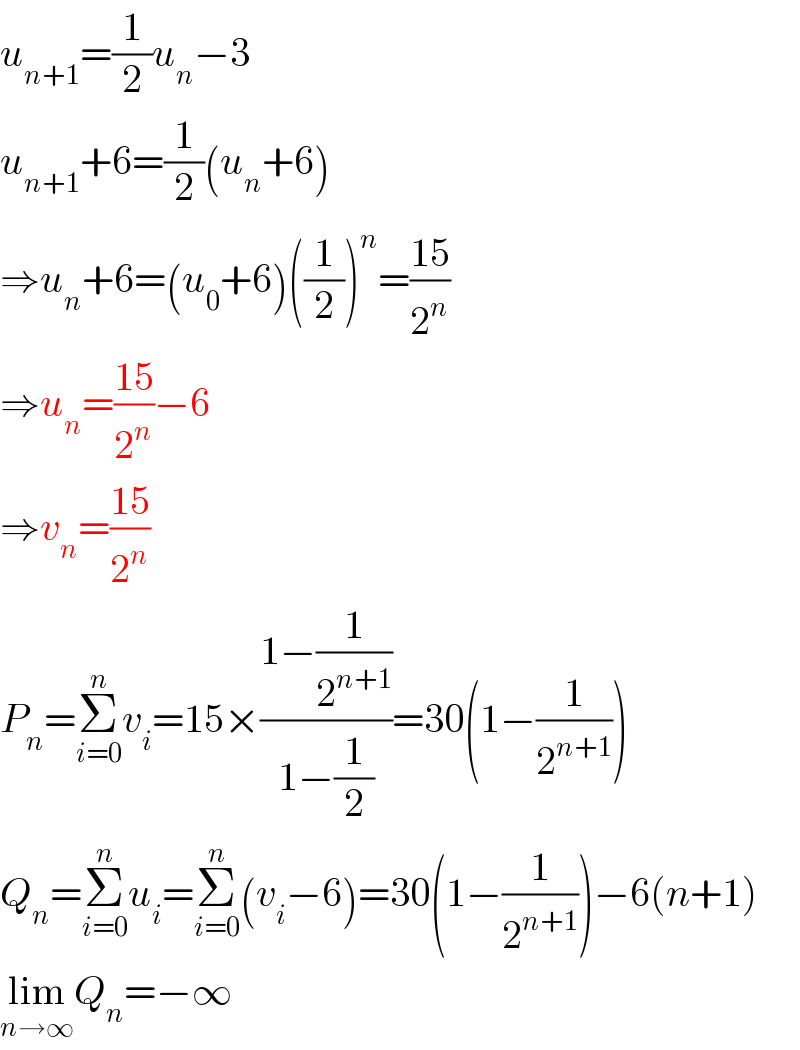
Commented by Rio Michael last updated on 13/Jun/20

Commented by Rio Michael last updated on 13/Jun/20
![sir that is correct. thanks to you both. my worry is: why (n +1) ? i know ΣV_i = Σu_i + Σ6 ⇒ Σu_i = ΣV_i −Σ6 why will it not equal 30[1−((1/2))^n ]−6n instead it equals 30 [1−((1/2))^(n+1) ]−6n−6](https://www.tinkutara.com/question/Q98390.png)
Commented by mr W last updated on 13/Jun/20
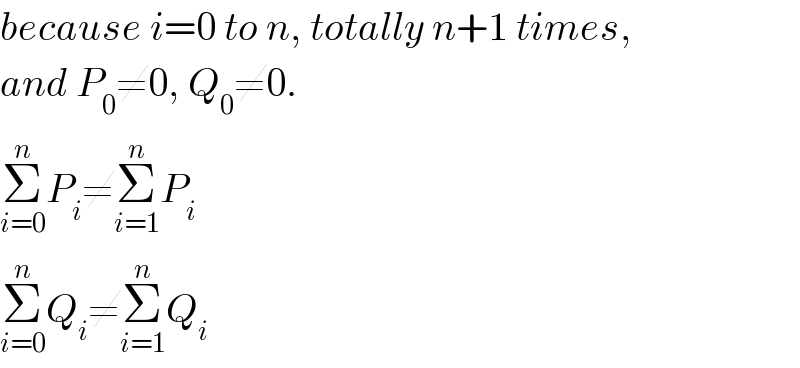
Answered by mathmax by abdo last updated on 13/Jun/20
